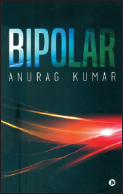Translate this page into:
Bipolar
Corresponding Author:
Philip Abraham
P.D. Hinduja Hospital and Medical Research Centre and Hinduja Healthcare, Mumbai, Maharashtra
India
dr_pabraham@hindujahospital.com
| How to cite this article: Abraham P. Bipolar. Natl Med J India 2018;31:313-314 |
Bipolar. Anurag Kumar. Notion Press, Chennai, 2017. 166pp, ₹ 220. ISBN 978-1947137288.

Name a profession that does not have its interesting anecdotes. Why else will there be old boys’ or girls’ reunions—not alumni meets, which have a serious purpose, but ole-folks clubs for the fun of recollection— whether it be school days, or college days or even corporate days, old memories revived, stories about friends, teachers or bosses, situations or affairs that left a mark or that you wish had not happened or you would rather forget, jokes shared at one’s own cost or more often at the cost of someone else. And, most such meets would have satellites of people circling around interesting storytellers. There, it takes storytellers to get people to rally around and listen.
Unfortunately, memory is short, particularly in the aged comrades who attend these gatherings. So, stories can be repeated to the same laughter. Till someday the storyteller and his buddies fall victim to the ravages of age, history rolls over for a new generation.
What has all this got to do with Bipolar? Everything—a profession, a great storyteller and many anecdotes (mostly funny, some tragic). The difference this time is that the captivating stories are there for all to read, for generations to come.
‘Bipolar’, in the Merriam–Webster e-dictionary, means ‘having or marked by two mutually repellent forces or diametrically opposed natures or views’. ‘Bipolar disorder’ is one of the moods characterized by alternating episodes of depression and mania— the manic-depressive disorder of old. Anurag Kumar, a paediatric surgeon, who graduated from King George’s Medical College, Lucknow, and Christian Medical College, Vellore, probably had manic-depression in mind when he named this engrossing collection, given the emotional roller-coaster ride that is a doctor’s life. On the other hand, every doctor’s thinking mind (why did I have to add the adjective?) is geared over time to handling conflicts—repellent forces of opposing nature. Here is a profession whose anecdotes go beyond the routine, into the morbid and life-and-death situations.
It takes a personality and an art to emerge from this unscathed, to be able to write about such events with some detachment, at the same time retain enough intimacy to allow the reader to relive the situations vividly. Kumar, now a freelance practitioner in Bilaspur, Chhattisgarh, begins the book with stories from his initiation days in medical college. Ragging was then macho, now a legally punishable offence. You wonder why it became an offence, when being macho is not! Kumar’s ragging seniors stopped at an invisible line (really?) and maybe made provision for the wimp as well, not so with today’s no-holds-barred generation. So, years from now, a generation will hopefully only read about this extinct practice, in Kumar’s words. He then moves on to his encounter with a cadaver in the anatomy hall, his ‘quiet teacher’. Every medical student can identify with the feelings that he shares.
He follows up a short coverage of his undergraduate days with several episodes during his professional training days: amusing scenes in the operation theatre to run-ins in the wards with tyrannical seniors and bosses and heavy-heart encounters with patients and families. As in every doctor’s life, every moment of lightness is balanced by a sobering one, whether it is a life-saving emergency or a critical absence of some drug or facility that could have made a difference. Note: much of this book is based on experiences in public hospitals, where ‘indent not available ' there is no budget allotment’ and ' too expensive’ are day-to-day phrases. A privileged generation trained in private medical institutions may never see this side of real life.
And as much as the sheer joy of a life saved or an illness cured is the frustration of an accident that need not have happened, or a battle finally lost. Disease is everywhere and disability and death are always waiting around the corner, hitting hardest when the victim is a near or dear one. It is surprising that doctors do not always turn philosophical or become monks. Maybe (and fortunately) all do not have such deep-thinking minds. It takes an Anurag Kumar to hold our hands and take us through such a bipolar life, retaining throughout a fresh sense of humour.
This book is not for libraries. It may not be for the non-medico, except for ones who want to peep into this world. Of course, there are meanings helpfully provided for the medical terms used. Even for a light-minded cynical doctor, this may be just a ' so-what, I too have seen similar events in the book’. For the fast reader, the heavy linguistic prowess and the liberal use of adjectives that mark the book may be a temptation to quickly run through the pages.
But, for those of us who look forward to reunions to relive the past, this book is a treasure. Dr Kumar, the enthralling storyteller around whom readers rally. More to come?
Fulltext Views
867
PDF downloads
270




